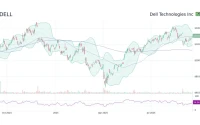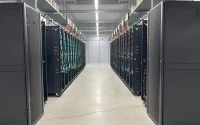I want you to look at two stories that broke on the same day. At first glance, they have nothing to do with each other. One is a dispatch from a broken system, a familiar cycle of static and recrimination. The other is a signal of something else entirely—a blueprint for how to build a future that works.
First, the static. In Washington, the old machine is grinding its gears again. As I write this, Senate Leader Chuck Schumer and House Leader Hakeem Jeffries are locked in another government shutdown battle with Donald Trump and the GOP. The deadline is Tuesday. The fight is over stopgap funding. Democrats want to include healthcare subsidies; Republicans don't. The details, honestly, are almost beside the point. They are the predictable error messages of a corrupted operating system.
We see the internal diagnostics flashing red. Reports of Schumer floating a short-term deal on a private call, only to reverse course after backlash. An anonymous House Democrat whispering fears that their 74-year-old leader might "cave" again, a nod to a vote last March that infuriated his own party. We see younger nodes in the network, like Senator Chris Murphy, trying to force a hard reboot, urging the party to "draw a line in the sand." And then you have Senator John Fetterman, looking at the whole contraption and asking the most fundamental question of all: "Plunging millions of Americans into chaos, that’s the fight?"
He’s not just questioning a tactic; he’s questioning the entire source code. He’s asking if the system’s primary function has become the fight itself. This is a classic zero-sum game—in simpler terms, it’s a design where for one side to win, the other must lose. And while they fight for inches, the entire platform we all rely on threatens to crash. Again.
It’s exhausting, isn’t it? It feels like we’re stuck in a time loop, running an outdated program that consistently produces the same bugs.
Forget Politics: The NBA Just Leaked a Blueprint for Progress
The System Upgrade
Then, on the very same day, a different signal cut through the noise. The NBA and its Players Association announced the inaugural NBA Pioneers Classic.
When I first read these two stories side-by-side, it was like looking at two different schematics for human organization. I honestly just sat back in my chair, speechless. One is a diagram of a closed loop, an architecture of conflict. The other is a blueprint for an open, evolving platform.

The Pioneers Classic, set for February 1, 2026, will honor Chuck Cooper, Earl Lloyd, and Nathaniel ‘Sweetwater’ Clifton. If you don’t know those names, you should. They were the first three African Americans to break the league’s color barrier in the 1950-51 season. Cooper was the first to be drafted. Clifton, the first to sign a contract. Lloyd, the first to step onto the court in a regular season game. They are, in engineering terms, the foundational code upon which the entire modern NBA was built.
And the league isn’t just paying lip service. The NBA and NBPA are jointly committing $750,000 to an NBA Pioneers Scholarship for students at Historically Black Colleges and Universities. This isn’t just a commemorative plaque; it’s a live investment. It’s a protocol for progress. They are honoring the pioneers not by building a museum, but by funding the next generation of pioneers.
Do you see the difference? It’s a profound one.
The political system is obsessed with the immediate fight, the next 7-to-10 day funding cycle, the next election. It’s constantly re-litigating the past and battling over the present. The system the NBA is modeling is doing the opposite. It is using its history as a launchpad. It is building a bridge from its foundational moment—the courage of three men 75 years ago—directly to the promise of students who haven't even enrolled yet. Imagine if we applied this collaborative, forward-funding, history-honoring model to our biggest challenges—it’s not just about politics or sports, it’s a fundamental paradigm shift in how we build a future that actually works for everyone.
This is the kind of breakthrough that reminds me why I got into this field in the first place. It’s a systems-level innovation hiding in plain sight. This isn’t just about basketball. It’s about a positive-sum framework. That’s a system designed so that when one person benefits, everyone benefits. The league, the players, the pioneers’ families, and future students all win. Chuck Cooper III, speaking for the families, said it all: he expressed deep gratitude for this "annual event." It’s not a one-off gesture; it’s a new, recurring function written into the league’s calendar.
This is the difference between an old, creaking assembly line and a modern, open-source project. The Washington model is the assembly line—each side fights for control of the conveyor belt, trying to bolt on their preferred part while trying to rip the other side’s off. The result is a dysfunctional mess that serves no one. The NBA model is open-source: it acknowledges the original authors of the code, invites new contributors, and focuses all its resources on building a better, more robust version for the future.
Of course, with great platforms comes great responsibility. The NBA is a multi-billion dollar corporation, and we should always be mindful of the motives behind institutional gestures. But the structure here is what’s so compelling. It’s a replicable model for progress that stands in such stark, hopeful contrast to the model of perpetual gridlock we’re being offered elsewhere.
What if we stopped asking "Who is winning the shutdown fight?" and started asking a better question: Are we running the right operating system for the 21st century?
The Architecture of Progress
Look at the two models. One is built on the premise of scarcity and conflict, a system that burns energy to maintain a dysfunctional status quo. The other is built on collaboration and investment, a system that uses its own history as fuel to power the future. We are all living inside complex systems, every day. The most important decision we can make is choosing which ones to build, which ones to believe in, and which ones to leave behind as relics of a bygone era. The blueprint for a better way is right there, if we’re willing to see it.
Reference article source:









